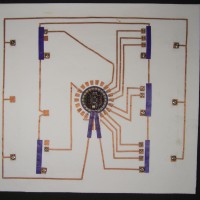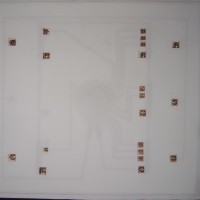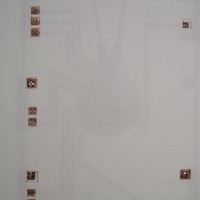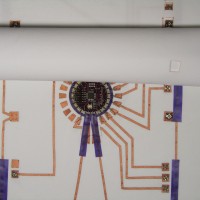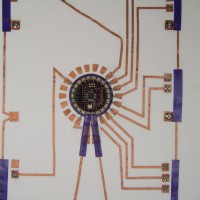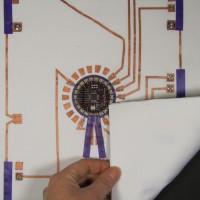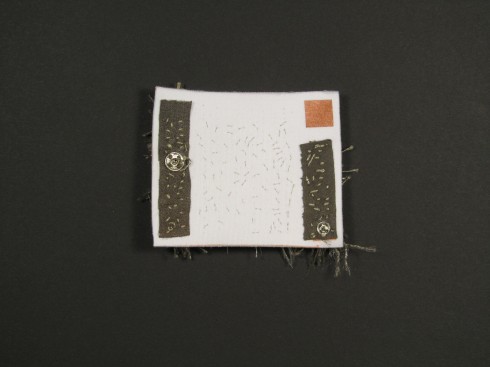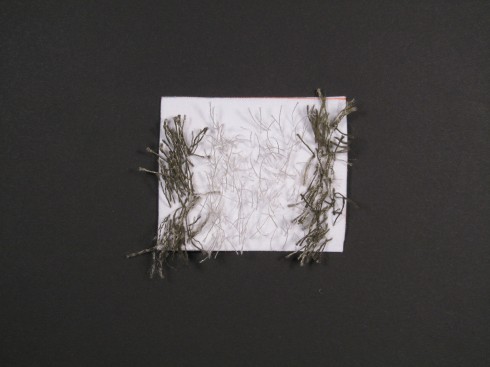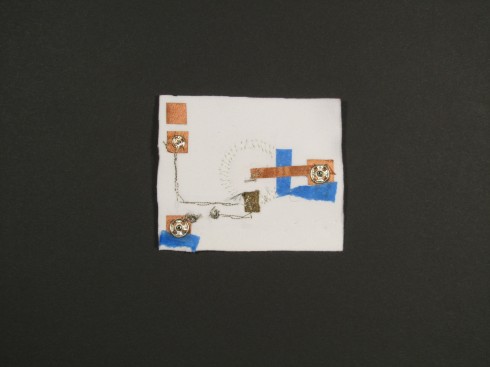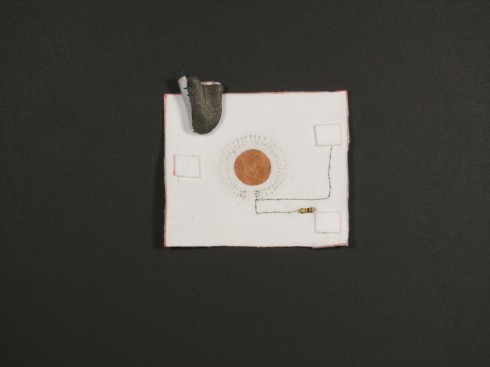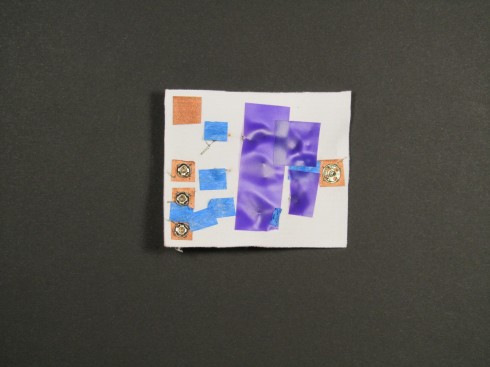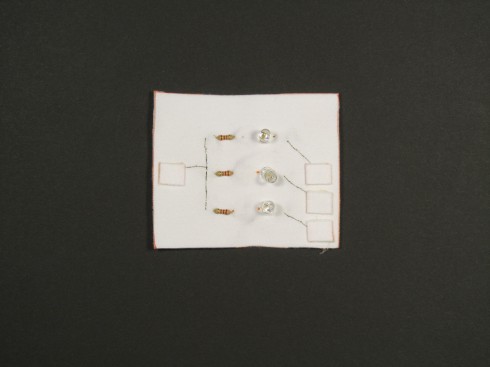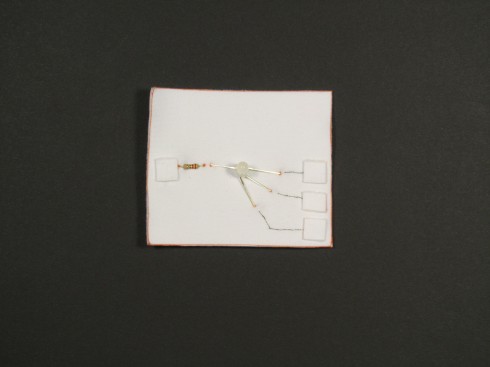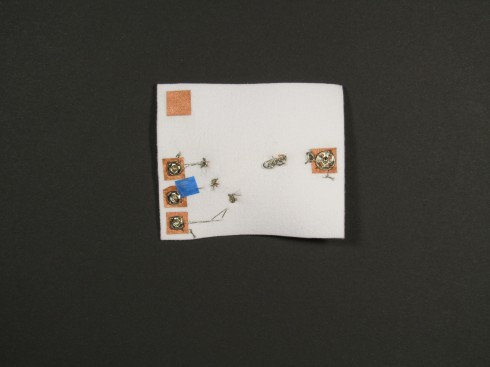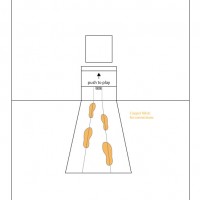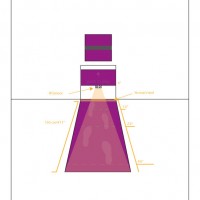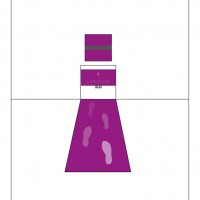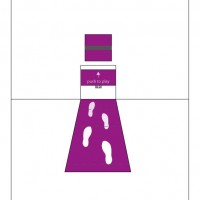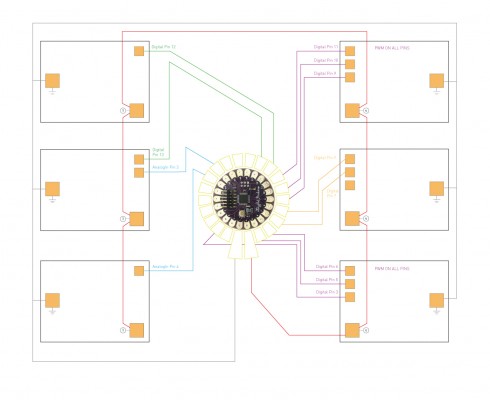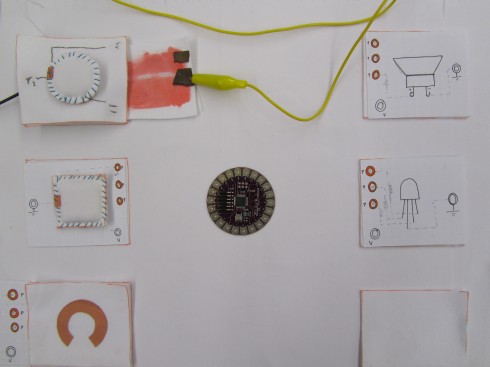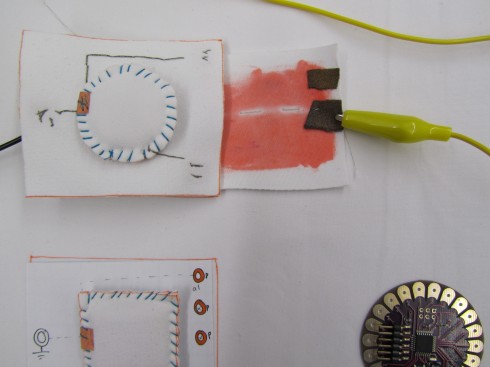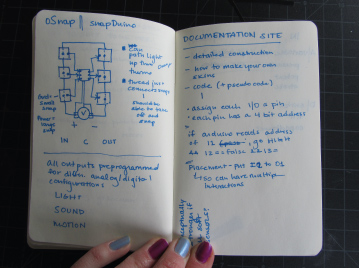Push Me Pull Me :: Construction + Code = User Testing
After a few snags in materials and construction, Paola offered us a fantastic solution. She suggested placing fabric around the boxed structure and focus on using the materials that we know work (i.e. the elastic), instead of forcing the materials we considered more aesthetically in line with our concept. As mentioned in a previous post, the elastic works much better in getting a dynamic range from the painted on liquid graphite; the other materials, such as spandex and jersey, ended up breaking the connection too much after a few uses.
Below are the videos documenting our first working prototype for the final piece and a bit of user testing:
SnapToTrace Final Paper
This paper is in SIGCHI format and was written for submission to the SIGCHI Conference on Tangible Embedded, Embodied Interaction 2012. You can download it here.
ABSTRACT
Modular toolkits and electronic textiles have emerged as highly effective resources to engage new audiences in computational learning. This paper will briefly review past relevant research in these domains, paying close attention to different taxonomies that consider the role of personal fabrication. Based on this analysis and user research, I will then introduce an interface prototype that is pedagogically concerned with user scalability and multiple points of entry. A specific focus is placed on the role materials play in achieving these pedagogical goals. I will close with plans for future iterations of the circuit mat and possible directions for development.
SnapToTrace Final Presentation and Feedback
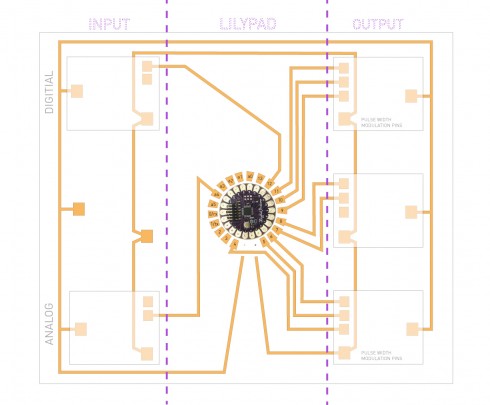
Final Presentation located here.
The feedback I received from Melanie focused mainly on developing the board as an interface to systems learning in realms outside of computation. This was fantastic feedback, especially since an early concept had framed it in this way. Katherine’s feedback was continued simplification of the components by taking them off the board. This is definitely the goal of the summer moving this project into potential thesis territory, along with some logic-based components.
Live and Learn
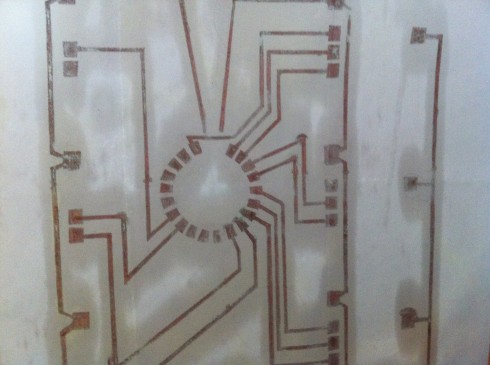
My first attempt at salt and vinegar etching a PCB turned out to be a bust. I left the fabric in the solution for almost 24 hours instead of the recommended 12; this disintegrated the traces and lost all the connectivity. I am in the middle of a second attempt at the moment.

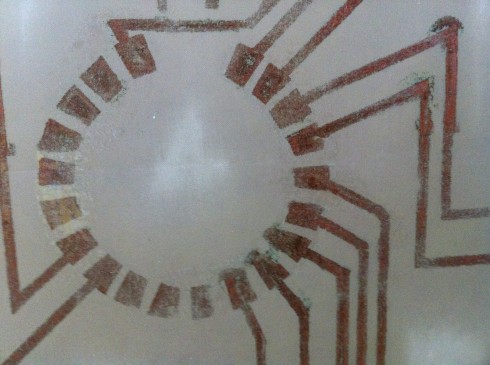
Two lessons to take:
Natalie Freed’s Amazing TeleScrap Book
This is great precedence for my current final project. I really like her execution and simple approach, as well as the ability to have two books communicate with each other.
PhysComp Final Project Concept 2
Calm Computing+IR Sensor
This final project assignment has three parameters: it must be calm computing; it must solve a problem; and it must use a IR sensor. Brainstorming this and avoiding a completely kitsch or overdone concept is much harder than you would think; so, I propose a project that would alleviate the omnipresent ordeal of erasing the spatial divide between user and interactive object. That is, constructing an object that facilitates interaction between the user/audience and an installation piece. Installations are often the preferred method of execution for many projects, yet we all fall into the trap of assuming our project will call people to interact with it. In reality, we have been conditioned with a museum mentality not to touch and we must break this behavior through the affordances of our design.
By combining the IR sensor to gauge the distance of a potential user, thermochromic ink and fabric traces (copper, specifically), I will construct a “red carpet” of sorts to invite the user to interact with a piece when they pass. As the user gets closer, Arduino triggers voltage from a certain pin to a footprint that leads up to the piece. Once the user is 6″ away, a sign is revealed to them that says “push me”. Not only will this aid in encouraging interaction with the specific piece, but is a form of interaction itself that can be used in a variety of situations.
Below are the paper prototypes and distance logistics (based on the ideal range of the sensor (4cm – 150cm):
Proof of Concept:
Minithesis Prototypes: Round 2

I got a little stuck over the weekend and earlier this week as I began to really shape my concept. With each new major project I am increasingly learning the indeterminate nature of my process; it certainly requires much unyielding percolation followed by periods of rapid action.
Slowly I am meandering my way towards a hard schematic, metaphorically speaking, of realizing my concept, especially after the feedback I received from my group.
Major Studio Prototype Presentation
More documentation to come, but here is the presentation.
SoftShop Syllabus Draft 1
Here is the link to my syllabus for a middle school program on soft circuits. It is still in an early malleability stage and its evolution will be closely tied to my major studio final project. Below is the course description:
SoftShop
Talking Lights and Stretching Sound
An Introduction to Physical Computing and SoftWear for Middle School Students
Shop Hours
Mondays from 3 – 5pm
Shop Location
2 West 13th Street, Rm 1006
Instructors
Liza Stark
TBD
Course Description and Objectives
In this course, middle school students will explore the possibilities of physical computing through soft components to offer students a large toolkit to draw from in implementing their designs. There will be a focus on interaction design, computational concepts, and craftsmanship. This course will be held largely in a workshop format with opportunities for group learning and individual work.
Learning Outcomes
By the end of this course, students will:


